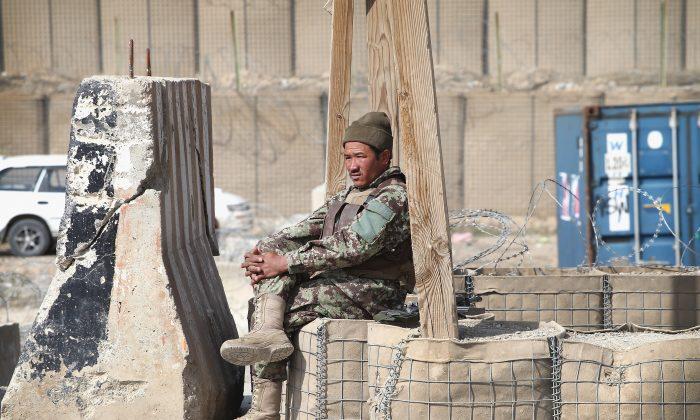The latest fallout in Iraq and the ongoing unrest in Afghanistan—two states visited by extensive foreign interventions—raise the question of whether the international community can ever really extricate itself once it has intervened in the affairs of a particular country.
In “Exit Strategies and State Building,” Oxford University professor of international relations Richard Caplan has compiled a series of essays from 16 noted scholars that focus on four types of state-building experiences, many of them post-conflict: colonial administrations, complex peace support operations, international territorial administrations, and transformative military occupations. The volume adds a set of thematic issues, such as institutional modifications to help manage post-conflict transition and the political economy of consolidating the peace.
The collection focuses on entrances and exits—how the international community becomes involved in post-conflict environments and how it extricates itself from the situation.
Exits, the book argues, should be seen as a transition process rather than an event, as in an election. Furthermore, exit is inextricably linked to entry, because as Caplan points out, “an entry strategy envisages an exit strategy.”
When this does not happen, exit strategies are hard to formulate, as the case of Kosovo shows. U.N. peacekeepers were deployed to Kosovo without a clear exit date or strategy in “the confused and violent aftermath” of a bombing campaign by NATO forces and the withdrawal of Serbian forces from Kosovo.
Nor do exits mean an absolute end to the international community’s involvement in state building. In several states in the Balkans—Macedonia, Kosovo, Croatia, Bosnia–Herzegovina—the European Union, through its accession process, has played a significant role in post-conflict state building. In the case of Bosnia–Herzegovina, the international community continues to play an integral role in holding the country together.
As the book’s several case studies demonstrate, because exits are a transitional process, state building requires continual re-evaluation and reassessment of the different actors at the local level. The case of Iraq showed that U.S. forces did not have much knowledge of the local actors on the scene when they invaded the country and started the process of state building, which led to a bloody sectarian war and a long, drawn-out battle with insurgents.
Politics at the local and international level play an enormous role in determining the pace of an exit strategy and the continued involvement of an intervening actor in state building. Again the case of Iraq is one of the best examples of this critical role of politics. The United States was facing pressure at home and in Iraq because of its military presence in the country, which contributed to the U.S. decision to transfer power to the Iraqis at an earlier date than military planners had intended (even as the duration of the war had long exceeded the estimates of its architects).
In the end, states must focus not on moments but on processes. Caplan concludes, “One must not only have greater flexibility—a firm orientation toward end states as opposed to end dates—but also consider a much longer time horizon and thus withstand the temptation to seek quick fixes.”
Ved Singh is a contributor to Foreign Policy In Focus. This article previously published at fpif.org.
